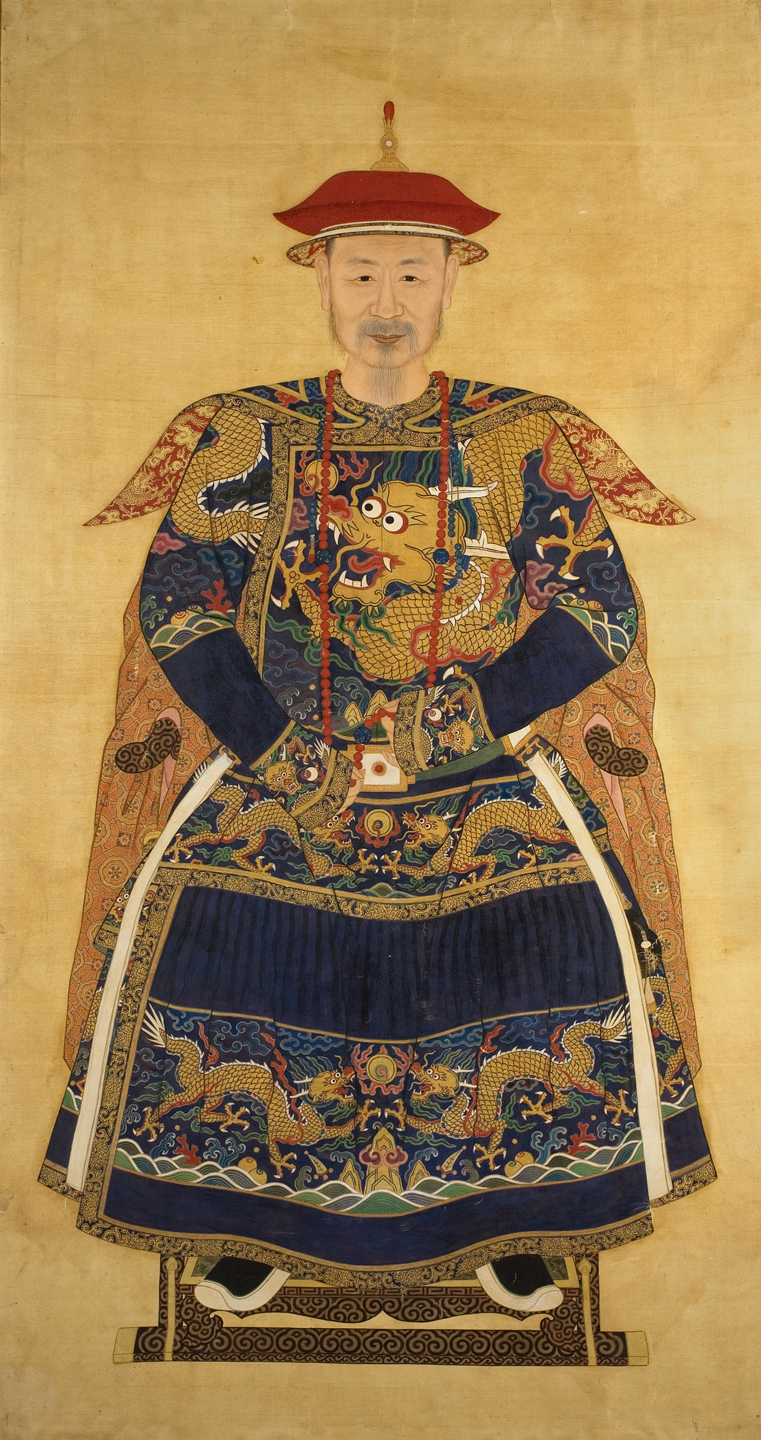Students will act as history detectives to uncover the purpose of and influences behind the Eyedazzler Blanket/Rug.
Students will be able to:
- describe what the Eyedazzler Blanket/Rug looks like, including details/purposes of its design;
- use historical data to support or refute a hypothesis and revise a hypothesis as new data is found;
- explain how understanding the background of the Eyedazzler Blanket/Rug helps them learn more about interactions between people; and
- discuss the significance of the rug’s design as compared to other Navajo patterns.
Lesson
- Preparation: Read the About the Art section on the Eyedazzler Blanket/Rug. Take time to look through riddles online that will work for your students; there are lots of great websites for ideas. Try this one from the National Institute of Environmental Health Sciences. Make sure you choose a riddle that isn’t too easy or difficult to solve. It should present just the right amount of challenge.
- Warm-up: Present a brainteaser/riddle to activate problem solving and hypothesis testing skills. Encourage the students to ask lots of “Yes” and “No” questions and not worry about how ridiculous their questions may seem because they will help them solve the riddle.
- Show students the rug without providing any information. Separate students into groups of 2–4 and ask them to develop a hypothesis about when the rug was made, where, and for what purpose. After crafting this initial hypothesis (based on previous knowledge and what they think they know to be true), they need to test their theory by researching information on the Internet. You may choose to provide some hints if the students get frustrated (e.g., the rug is from the western United States).
- After students have generated evidence to support their hypotheses, or revised them based on the evidence, they will present their ideas to the class. The class will select the hypothesis they believe is most accurate.
- Share that what they’ve done is what historians do—they solve mysteries of the past, putting together evidence to support or refute an initial idea.
- Students will then read the About the Art section on the rug, including the information about the Navajo weaving tradition from the “Details” section, paying careful attention to the artistic design choices and their role in the purpose of the rug. Students will further refine the hypothesis they selected using the new information.
Materials
- Riddle for warm-up
- Computers and Internet access for students to conduct research
- About the Art section on the Eyedazzler Blanket/Rug
- Color copies of the Eyedazzler Blanket/Rug for students to share, or the ability to project the image onto a wall or screen
Standards
- Social Studies
- History
- Evaluate and analyze sources using historical method of inquiry and defend their conclusions
- Understand the concept that the power of ideas is significant throughout history
- Analyze the concepts of continuity and change and effect
- Become familiar with United States historical eras, groups, individuals and themes
- Visual Arts
- Invent and Discover to Create
- Observe and Learn to Comprehend
- Envision and Critique to Reflect
- Language Arts
- Oral Expression and Listening
- Research and Reasoning
- Collaboration
- Critical Thinking & Reasoning
- Information Literacy
- Invention
- Self-Direction
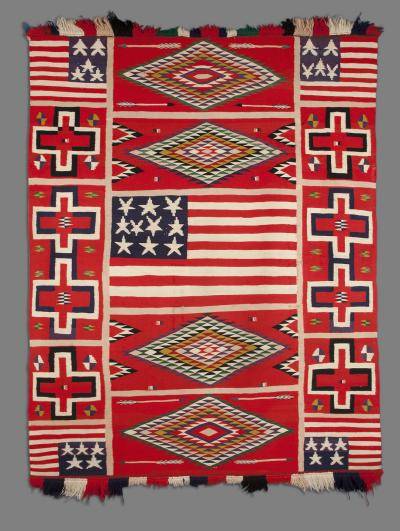
Eyedazzler Blanket/Rug
Artist not known, Navajo, United States
About 1885
Length: 71in. Width: 54 in.
Gift of Mrs. Charles Macallister Willcox, 1937.306
Photograph © Denver Art Museum 2012. All Rights Reserved.
This blanket/rug was likely the work of a female Navajo artist. Loom weaving was a woman’s art among the Navajos after they learned the skill from their Pueblo neighbors in the 1600s, but today both men and women weave.
Navajo weavers are justly famous for the excellence of their textiles. This style, known as an eyedazzler because of its vivid colors and dizzying design combinations, was popular during the later years of the Transitional period in Navajo weaving (1868–90), when artists began weaving for the tourist market rather than solely for home use. Brightly colored “Germantown” yarns, widely available through newly established trading posts on the Navajo Reservation, made it possible to produce these vibrant masterpieces.
During the Transitional period (1868–90) when this blanket/rug was created, Navajo weavers began to produce patterns compatible with the tastes of traders and patrons. Eyedazzler weavings are uniquely Navajo innovations, created to take advantage of a range of commercially made colors not previously available. In some ways you can think of these artists as testing a new product on a new audience.
Although this rectangular weaving is called a blanket or a rug, the decorative fringe and cotton warp (cotton is less durable than wool) suggest that its maker knew it was more likely to be displayed on a wall for decoration than to be used.
Details

The Bold Red
The red wool used throughout the background is a kind of commercially manufactured yarn called Germantown, named after a town in Pennsylvania that produced these yarns using synthetic dyes.
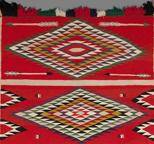
Saltillo Diamond
Navajo artists borrowed the serrated diamond motif from New Mexican Saltillo serapes. The Navajo people became familiar with the motif when they were incarcerated at Bosque Redondo in New Mexico (1863–68), where they received Saltillo-style blankets from the United States government.
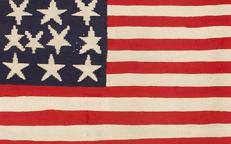
Flags
Five flags appear in this eyedazzler. Notice how the artist used them to mimic the look of the American flag but not duplicate it exactly. Navajo weavers of this time often used flags in their textiles as design elements to appeal to non-Navajo customers.
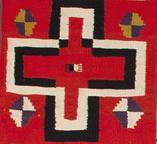
Crosses
Artists often included cross-shaped designs in their eyedazzlers. Despite the obvious association with Christianity, these designs may have been derived from traditional Navajo women’s dresses.
Funding for object education resources provided by a grant from the Morgridge Family Foundation. Additional funding provided by the William Randolph Hearst Endowment for Education Programs, and Xcel Energy Foundation. We thank our colleagues at the University of Denver Morgridge College of Education.
The images on this page are intended for classroom use only and may not be reproduced for other reasons without the permission of the Denver Art Museum. This object may not currently be on display at the museum.






